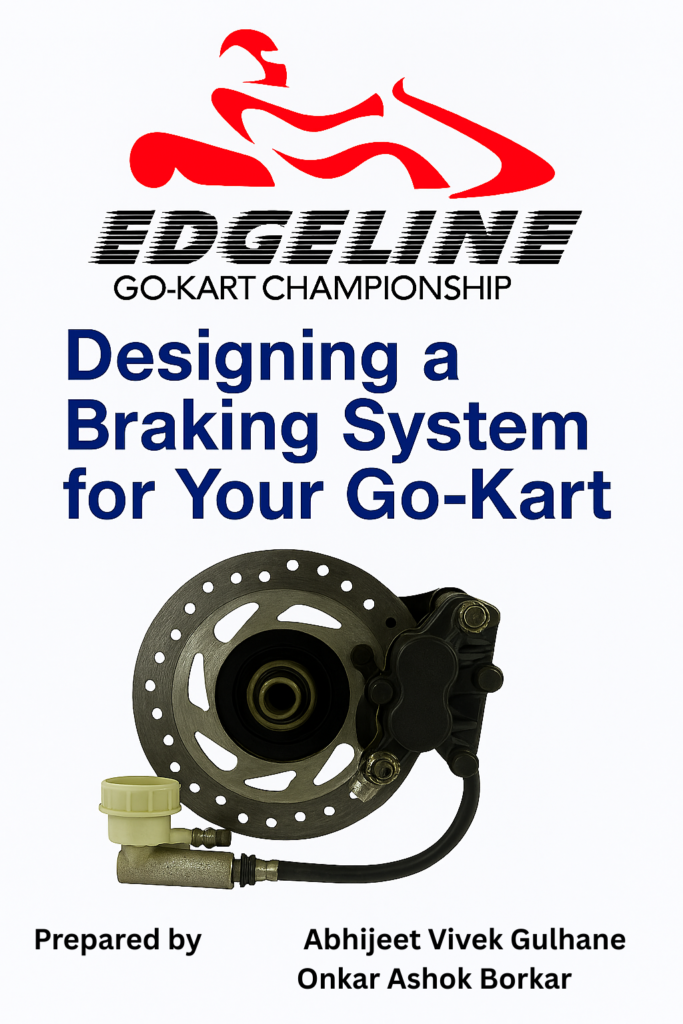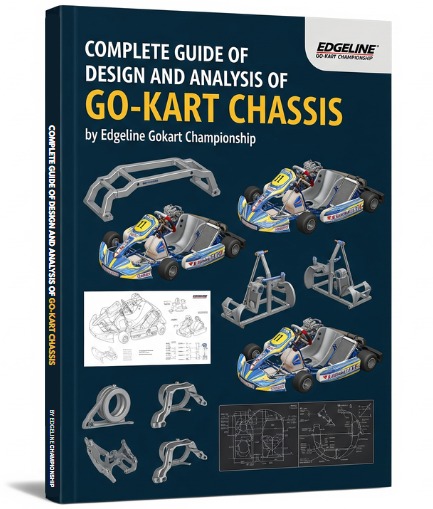Complete Guide: Designing a Braking System for Your Go-Kart

Welcome to the Edgeline Go-Kart Championship Technical Resource Hub. This guide is tailored for student engineers and participants designing a reliable braking system for their karts. We’ve simplified the technical content and provided clear steps to help you build a safe, race-ready setup.
Why the Braking System Matters
A go-kart may be compact, but braking performance is just as critical as acceleration. A well-designed brake system ensures:
Short stopping distances
Consistent performance during racing
Driver confidence and control
Most student go-karts use a single hydraulic disc brake mounted on the rear axle. It’s simple, cost-effective, and easy to maintain.
Key Components You Will Need
These components are commonly sourced from motorcycle donor parts in the Indian market:

Basic Vehicle Data
(Example Setup)
Step-by-Step Calculations
1. Normal Load on Rear Tires
2. Maximum Tire Grip Force
→ This is the maximum braking force before rear tires begin to skid.
3. Master Cylinder Pressure
Master cylinder area:
4. Caliper Clamp Force
Caliper piston area:
Note: The clamp force is already the total from both pistons—no need to double it again.
5. Rotor Torque Capacity
Effective radius ≈ 85 mm (based on pad contact zone):
→ This torque is well above the tire grip limit, confirming the system is sufficiently strong.
6. Stopping Distance (Rear Brakes Only)
Estimated deceleration:
With front brakes added, stopping distance could reduce to ≈ 14 m.
Rulebook Compliance Note
According to the Edgeline Go-Kart Championship Rulebook, a kart must stop from 40 km/h within 5–7 m.At 40 km/h (11.1 m/s), this requires 0.9–1.25 g deceleration.
Our simplified theory showed longer distances because it assumed:
Only rear brakes working.
Static weight distribution (no dynamic load transfer).
Average road friction coefficient (μ = 0.70).
In real racing conditions:
Dynamic load transfer increases rear axle grip under braking.
Racing tires often have μ ≈ 1.0–1.2, allowing >1 g braking.
Some karts use both axles braking, reducing stop distance further.
That’s why real karts can meet the 5–7 m rulebook requirement even though conservative calculations predict higher values.
Key advice for participants:
Ensure brakes can lock wheels → then focus on control & modulation.
Use good racing tires to achieve high grip.
Keep the kart’s CG low and balanced for effective load transfer.
Always perform real stopping tests to confirm compliance before competition.
What This Means for You
Your brake capacity is not the limitation; tires are. If your system can lock the rear wheels, it’s already sufficient.
Focus on good modulation (smooth pedal feel) instead of just maximum force.
A smaller caliper or lower pedal ratio may actually give better control.
Always double-check units! Many students mistakenly forget to convert millimeters to meters when calculating torque.
Final Word
Your braking system should be simple, strong, and safe. The calculations above show how to size your master cylinder, caliper, and disc. Ultimately, tire grip and driver control determine real-world performance.
By following these steps, you’ll build a professional-grade braking system that meets the Edgeline Go-Kart Championship’s safety and performance standards.
Prepared by:
Mr. Abhijeet Vivek Gulhane
Mr. Onkar Ashok Borkar
Organizers, Edgeline Go-Kart Championship
Helping engineering students race smarter.
Take Your Engineering Skills To The Next Level
Enroll In Our Premium Course Complete Guide of Design and Analysis of Go-Kart Chassis and Start Building Like a Pro!”
